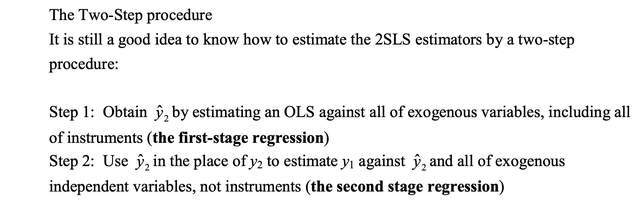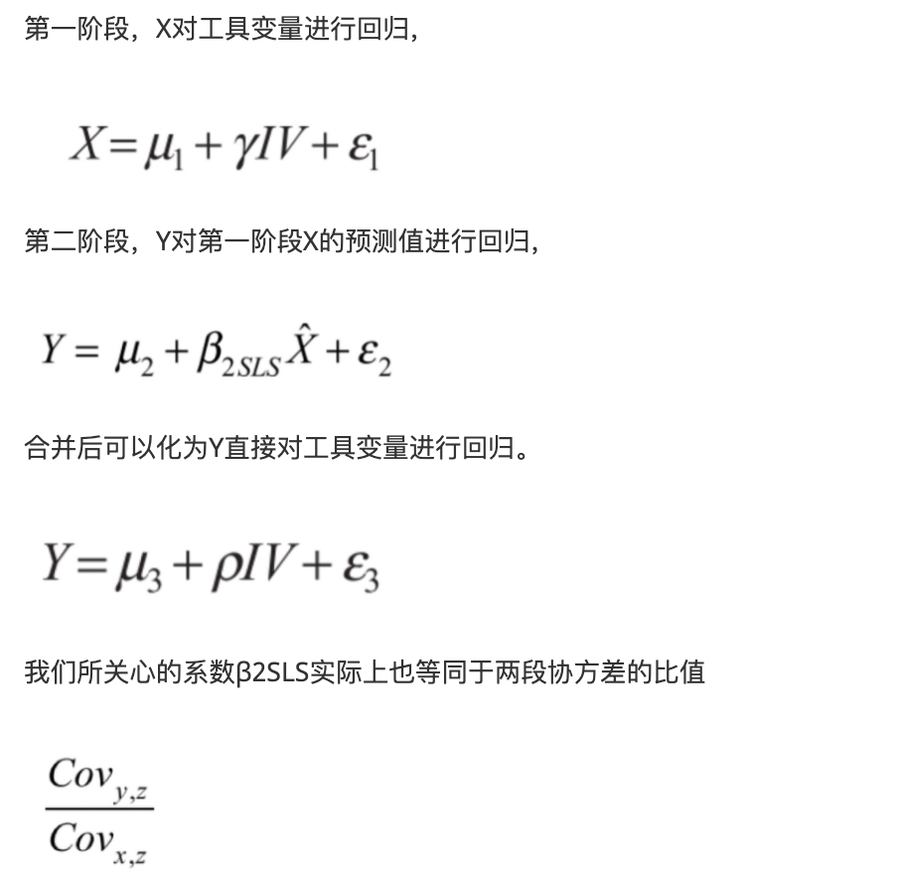5-两阶段最小二乘法
5-两阶段最小二乘法
比如我们想要研究教育程度(接受教育年份,暴露因素X)对未来收入(薪资,结局变量Y)的影响。

这里我使用ivreg 中的数据集:
代码部分简单带过,这里主要以原理介绍为主。
我们首先发现教育程度与未来收入确实是显著相关的p-value: < 2.2e-16。
接下来,我们就要使用两阶段最小二乘估计,来定量估计暴露因素X与Y之间的关联效应大小。

两阶段最小二乘估计分为两个阶段,第一阶段是将自变量的变异分解,使用工具变量对暴露因素建立回归;第二步再通过暴露因素预测值(predicted value,P)构建和结局变量Y之间的回归方程。

比如说这里我们发现有一个变量,即距离学校距离是否近。我们发现,与学校距离远近,不仅与教育程度(接受教育年份,暴露因素X)相关,它同样与未来收入(薪资,结局变量Y)相关。那么,这里学校距离远近就是一个潜在的工具变量。
5.1-第一阶段
我们首先需要明确工具变量对暴露因素的作用。
这里首先需要构建Z-X 回归模型:X = α + dZ + ε。除了要看工具变量以外,还要加上外生变量做回归。
这里主要有两个目的:
明确工具变量对自变量的作用,看该变量与我们的自变量(暴露因素)之间是否是高度相关的;
获得暴露因素预测值,以作为第二阶段的自变量。
5.2-第二阶段
第二阶段就是用工具变量对自变量的预测值来估计回归系数:Y=α + βX(Z对X的预测值) +ε
因此这个式子实际可以合并为Y = α + dZ + ε
即: 
Last updated